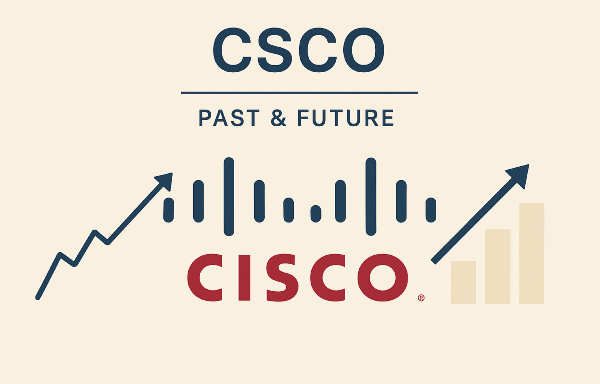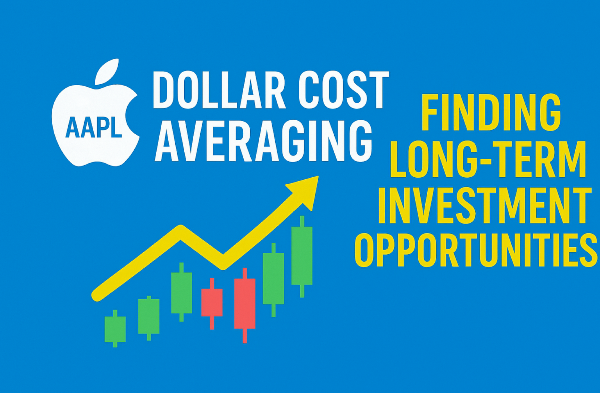Introduction
Hey everyone, welcome back to Stock Brock. Today we’re diving into Cisco Systems—a name I never thought I’d break down, but their recent earnings caught my attention. In this article, we’ll unpack the key numbers, explore growth drivers, weigh the risks, and I'll share whether Cisco stock deserves a spot in your portfolio.
Stock Performance Overview
Cisco trades at a price-to-earnings ratio of 26.55 and closed recently at $69.30, dipping just $0.08 in after-hours. Since its IPO in 1990, the stock has delivered a jaw-dropping 89,000% total return. Over the last five years, shares are up 63%, which trails the broader S&P 500, but on a one-year basis, Cisco has soared 52%.
These metrics underscore Cisco’s status as an established tech giant. It’s no rocket ship, yet it has delivered solid gains for patient investors.
| Metric |
Value |
| Price-to-Earnings (P/E) |
26.55 |
| Recent Share Price |
$69.30 |
| IPO to Today Gain |
89,000% |
| 5-Year Return |
63% |
| 1-Year Return |
52% |
Earnings Highlights
In fiscal 2025’s fourth quarter, Cisco reported revenue of $14 billion, up 8% year-over-year, capping off a full-year tally of $56.7 billion, a 5% increase. On the earnings front, non-GAAP EPS came in at $0.99, topping the high end of guidance, while GAAP EPS was $0.71.
Gross margins remain a standout feature. On a GAAP basis, margins clocked in at 65.7%, and on a non-GAAP basis at 68.4%. For a networking and infrastructure stalwart, those are impressive levels of profitability.
| Quarter |
Revenue |
Rev. Growth |
GAAP EPS |
Non-GAAP EPS |
GAAP Margin |
Non-GAAP Margin |
| Q4 FY 2025 |
$14 B |
+8% |
$0.71 |
$0.99 |
65.7% |
68.4% |
| Full Year |
$56.7 B |
+5% |
– |
– |
– |
– |
Year-Over-Year Performance
Cisco’s Q4 product orders climbed 7%, demonstrating healthy demand across its hardware and software lines. Most notable was the annual recurring revenue (ARR), which now exceeds $30 billion—an increase of 22% year-over-year, reflecting Cisco’s push into software subscriptions.
Pulling together hardware, software, and services under recurring models is central to Cisco’s pivot away from one-and-done equipment sales. That shift helps smooth out revenue, improve visibility, and lock in clients over multi-year contracts.
Growth Opportunities
Cisco isn’t just talking about software; it’s leaning into AI infrastructure. Orders from hyperscale customers surpassed $800 million in this quarter alone, bringing the fiscal year total to $2 billion—double the original goal. These deals position Cisco in the data center of tomorrow, where AI workloads demand high-performance networking.
Security and observability also stand out. Security revenues jumped 117% year-over-year, and integrating with Splunk is driving further growth in analytics. As enterprises demand better threat detection and real-time monitoring, Cisco’s combined hardware-software approach can be a one-stop shop.
Global demand remains robust, with product order growth across the Americas, Europe, and Asia. Whether it’s upgrading legacy datacenters or deploying campus networks, Cisco’s breadth lets it capture opportunities wherever IT spending is recovering.
| Opportunity |
Q4 FY 2025 Metric |
YoY Change |
| AI Infrastructure |
$800 M orders |
– |
| FY AI Orders Total |
$2 B |
+100% vs goal |
| Annual Recurring Rev. |
$30 B |
+22% |
| Security |
– |
+117% |
| Global Orders Growth |
Americas, Europe, Asia |
Broad-based |
Risks and Concerns
No story is complete without the downside. Cisco’s traditional networking segment saw revenue decline 3% this quarter as enterprise customers held off on refresh cycles. That legacy business still accounts for a big chunk of revenue and faces stiff competition and margin pressure.
Macroeconomic headwinds—think trade tensions, supply-chain snags, and uneven IT budgets—could twist the knife on spending. Cisco needs its AI and subscription initiatives to outpace that slow core networking growth.
On valuation, Cisco trades at a P/E near 26.5 with a dividend yield just over 2.3%. A strong cash position, recurring revenues, and consistent share buybacks support that yield. But at this multiple, upside feels more moderate than explosive—especially when compared to high-growth cloud peers.
| Risk Factor |
Details |
| Networking Decline |
–3% revenue drop in traditional segment |
| Enterprise Spending |
Slower IT refresh cycles by large customers |
| Competition |
Margin pressure from peers and niche players |
| Macroeconomic Uncertainty |
Trade issues; uneven global IT budgets |
| Valuation |
P/E 26.5; Dividend Yield ~2.3% |
Long-Term Outlook
Cisco checks many boxes for stability: a fortress balance sheet, recurring revenue streams, dividend growth, and exposure to enterprise tech and AI infrastructure. While it won’t grow at a 20%-plus clip, it could compound steadily over time, rewarding investors with income and modest capital gains.
For income-focused portfolios, the dividend yield and buyback program make Cisco attractive. For growth-hungry investors, the AI infrastructure and subscription pivot add a splash of momentum, albeit not fast enough to outshine pure plays.
Conclusion
Cisco Systems stands at the intersection of reliability and transformation. Its core networking business is slowing, but AI infrastructure, security, and subscription revenue are picking up pace. At a P/E of 26.5 and a 2.3% yield, the stock appears fairly valued—offering limited near-term upside but solid long-term stability.
Rating: Hold
If you value steady income, predictable cash flows, and modest AI exposure, Cisco is a dependable pick. But if you chase high growth or deep discounts, it’s not the most compelling choice right now.
https://youtu.be/qffu8Gp_YCk?si=SmEc4oBWGG7yK2bS






























Introduction
Hey everyone, welcome back to Stock Brock. Today we’re diving into Cisco Systems—a name I never thought I’d break down, but their recent earnings caught my attention. In this article, we’ll unpack the key numbers, explore growth drivers, weigh the risks, and I'll share whether Cisco stock deserves a spot in your portfolio.
Stock Performance Overview
Cisco trades at a price-to-earnings ratio of 26.55 and closed recently at $69.30, dipping just $0.08 in after-hours. Since its IPO in 1990, the stock has delivered a jaw-dropping 89,000% total return. Over the last five years, shares are up 63%, which trails the broader S&P 500, but on a one-year basis, Cisco has soared 52%.
These metrics underscore Cisco’s status as an established tech giant. It’s no rocket ship, yet it has delivered solid gains for patient investors.
Earnings Highlights
In fiscal 2025’s fourth quarter, Cisco reported revenue of $14 billion, up 8% year-over-year, capping off a full-year tally of $56.7 billion, a 5% increase. On the earnings front, non-GAAP EPS came in at $0.99, topping the high end of guidance, while GAAP EPS was $0.71.
Gross margins remain a standout feature. On a GAAP basis, margins clocked in at 65.7%, and on a non-GAAP basis at 68.4%. For a networking and infrastructure stalwart, those are impressive levels of profitability.
Year-Over-Year Performance
Cisco’s Q4 product orders climbed 7%, demonstrating healthy demand across its hardware and software lines. Most notable was the annual recurring revenue (ARR), which now exceeds $30 billion—an increase of 22% year-over-year, reflecting Cisco’s push into software subscriptions.
Pulling together hardware, software, and services under recurring models is central to Cisco’s pivot away from one-and-done equipment sales. That shift helps smooth out revenue, improve visibility, and lock in clients over multi-year contracts.
Growth Opportunities
Cisco isn’t just talking about software; it’s leaning into AI infrastructure. Orders from hyperscale customers surpassed $800 million in this quarter alone, bringing the fiscal year total to $2 billion—double the original goal. These deals position Cisco in the data center of tomorrow, where AI workloads demand high-performance networking.
Security and observability also stand out. Security revenues jumped 117% year-over-year, and integrating with Splunk is driving further growth in analytics. As enterprises demand better threat detection and real-time monitoring, Cisco’s combined hardware-software approach can be a one-stop shop.
Global demand remains robust, with product order growth across the Americas, Europe, and Asia. Whether it’s upgrading legacy datacenters or deploying campus networks, Cisco’s breadth lets it capture opportunities wherever IT spending is recovering.
Risks and Concerns
No story is complete without the downside. Cisco’s traditional networking segment saw revenue decline 3% this quarter as enterprise customers held off on refresh cycles. That legacy business still accounts for a big chunk of revenue and faces stiff competition and margin pressure.
Macroeconomic headwinds—think trade tensions, supply-chain snags, and uneven IT budgets—could twist the knife on spending. Cisco needs its AI and subscription initiatives to outpace that slow core networking growth.
On valuation, Cisco trades at a P/E near 26.5 with a dividend yield just over 2.3%. A strong cash position, recurring revenues, and consistent share buybacks support that yield. But at this multiple, upside feels more moderate than explosive—especially when compared to high-growth cloud peers.
Long-Term Outlook
Cisco checks many boxes for stability: a fortress balance sheet, recurring revenue streams, dividend growth, and exposure to enterprise tech and AI infrastructure. While it won’t grow at a 20%-plus clip, it could compound steadily over time, rewarding investors with income and modest capital gains.
For income-focused portfolios, the dividend yield and buyback program make Cisco attractive. For growth-hungry investors, the AI infrastructure and subscription pivot add a splash of momentum, albeit not fast enough to outshine pure plays.
Conclusion
Cisco Systems stands at the intersection of reliability and transformation. Its core networking business is slowing, but AI infrastructure, security, and subscription revenue are picking up pace. At a P/E of 26.5 and a 2.3% yield, the stock appears fairly valued—offering limited near-term upside but solid long-term stability.
Rating: Hold
If you value steady income, predictable cash flows, and modest AI exposure, Cisco is a dependable pick. But if you chase high growth or deep discounts, it’s not the most compelling choice right now.
https://youtu.be/qffu8Gp_YCk?si=SmEc4oBWGG7yK2bS